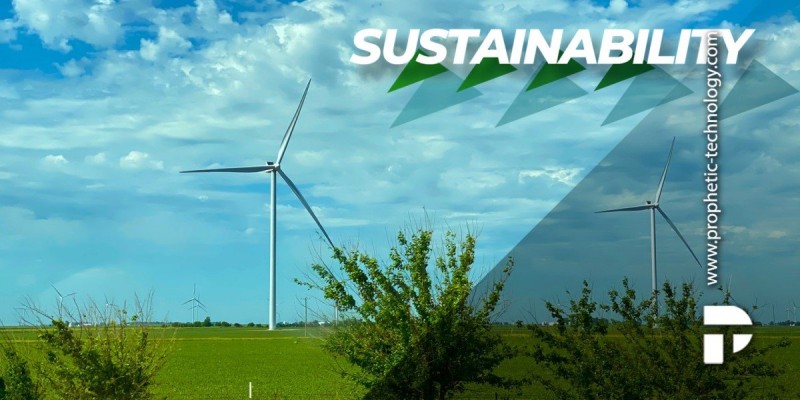Food Supply Chain (FSC) concerns are governance and logistics issues, and above all, it is a human crisis. Current food production and consumption behaviours have harmfully impacted the environment, triggering CO2 emissions and the vast quantity of Food waste. We generate waste at any stage of the Food value chain when waste-producing, processing, distributing, and retail; it ends in landfills, losing valuable by-products.
Studies demonstrate that we generate sufficient food to feed the worldwide population effectively, yet many people are malnourished while billions are fat or overweight. The detriment to human health and the environment are far more critical than the benefits.
According to previous researches, households generate more than 8 million metric tons of food and drink waste every year, valued at billions and account for about 3% of domestic greenhouse gas emissions and 70% of freshwater extraction (these numbers vary in each country.) It illustrates the level of our modern food practices lacking efficiency and effectiveness.
People buy more food than they consume; they discard food never consumed or already expired, which becomes part of waste; when we waste food, we waste resources, labour, and the money invested in food. Thus, we better stop thinking about food as a linear chain; think about it as a network, where you can have helpful interconnections to sharing nutrients or by-products.

Food waste
Food waste has critical consequences for the farming sector, especially for those small farmers whose food production is the means for supporting their families and lands. They produce 80% of the food consumed in the emerging world; unfortunately, it involves the world’s neediest and most undernourished people, mostly living and working in rural areas in agriculture fields.
Is Circular economy the solution?
The existing model is linear, meaning ‘take-make-use-dispose.’ The Food community agreed recently on ensuring the product’s sustainability and development to evolve from the current industrial-linear model to a Circular Economic (CE), proposing tools to diminish the FSC waste. It encompasses the recycling of food by-products, waste and nutrient to set up efficient-sustainable Circular FSC.
A supermarket is an excellent example of a linear process. Even food, still good, requires taking it off from shelves due to excess inventory or surplus causes, or about to expire, often going to a landfill. There is no clear understanding of the possibility food-waste cost represents for FSCs when integrated into a dynamic CE cycle.
The primary purpose of a Circular FSC is to guarantee zero food waste. For example, vegetables and fruits that do not meet up rigorous supermarkets prerequisites represent a food waste dilemma. Retailers often accept no more than 60-80% of farmers’ production subjected to appealing reasons; therefore, an efficient approach is vital to support businesses reusing those discarded products.
What do farmers need to know?
Farmers gain from clear information about the use, reuse or recycling of food waste cost. They need to participate with other FSC communities to make the best use of resources, set up synergic alliances to inter-change, sell or transfer waste and byproducts, and design scenarios concerning farming, processing, and retailing address sustainability subjects. They can develop potential strategies for unwanted materials, focus on demands, sustainable consumption, and end consumer patterns.
We require to develop innovative business models that can provide incentives for FSC members to follow circular strategies. With appropriate technology and food waste designs, they can generate renewable energy, enhance the soil as a fertiliser, compost and feed animals.
Potential paths for a Circular Food Supply Chain
· Food waste could be a renewable energy source, providing producers with an excellent energy source for production activities.
· Food waste can produce bio-fertiliser, restoring nutrients to the soil and biofuel and recycling waste by 90%.
· Industries could boost their sustainability and productivity qualifications.
· We can donate surplus food to social charities for vulnerable communities.
· Producers can give employees discounts on food about-to-expire shelf-life and added-incentive for the workforce to do their best.
· Food waste is a fantastic source for livestock feeding.
· Food leaders can apply technical and business-related developments in the SC, such as the anaerobic digestion process to treat waste and plasma arc gasification), converting greenhouse gases into energy.
· Companies can design essential-business-management practices for better sustainable processes, like reverse logistics, product design, performance measurement, and valuable recovery processes to handling waste ecologically.
Finding solutions to provide nourishing food to nearly 10 billion people without destroying our planet is producers, distributors, supermarkets, and consumers’ responsibility.
Incorporating SC teamwork, collaboration, strategy improvement, sharing information among chain members in the Food sector is a dynamic management strategy for circular practices. Likewise, IoT and Big Data play a significant role in a CE via data-driven-logistic planning. Reliable insights into the data and waste flow are crucial when deciding on building up a Circular Economy.
Summing up: Getting rid of waste is cost-effective, as it demands from organisations better practices. So, it is essential to transform our Food Supply Chain strategies to avoid waste from being unproductive during the production cycle.
Are you stocked on your old linear Food Supply Chain?









